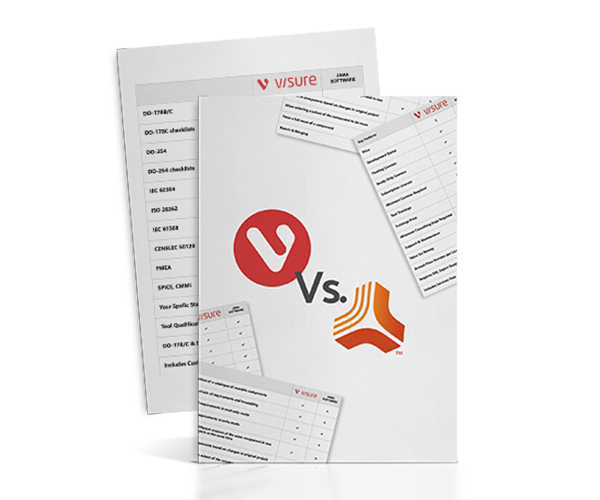Jama Software | Complete Guide
Jama Limitations
Table of Contents
Introduction
In the field of software development, effective requirements management is crucial for successful project delivery. Organizations rely on robust requirements management tools to streamline the process and ensure accurate documentation of project requirements. Jama, a widely used requirements management tool, offers numerous benefits for teams working on complex projects. However, like any software, Jama has its limitations. This article aims to provide a comprehensive overview of Jama’s limitations and explore potential workarounds.
Understanding Jama Limitations
Scalability Challenges
One of the primary limitations of Jama is its scalability when dealing with large and complex projects. As project requirements grow in size and complexity, Jama may struggle to handle vast amounts of data effectively. This can result in slow performance, increased response times, and decreased overall productivity. Additionally, the user interface may become cluttered and challenging to navigate, making it difficult for stakeholders to collaborate efficiently.
Limited Integration Options
Another significant limitation of Jama is its limited integration options with other tools commonly used in software development processes. While Jama does offer some integrations with popular development tools, such as JIRA and Azure DevOps, the range of integrations is relatively narrow compared to other requirements management tools available in the market. This limitation can pose challenges for teams that rely on multiple tools within their development workflow.
Lack of Advanced Analytics and Reporting
Jama provides basic reporting capabilities, allowing users to generate simple reports and export data. However, it lacks advanced analytics features that can provide valuable insights into the project’s progress, quality, and potential risks. Without comprehensive analytics and reporting functionalities, teams may find it challenging to make data-driven decisions and assess the overall health of the project accurately.
Limited Customization Options
While Jama offers a range of predefined templates and workflows to facilitate requirements management, it has limited customization options. Each organization may have its unique set of processes and requirements, and the inability to customize Jama to align with those specific needs can be a significant drawback. Teams may find themselves adapting their workflows to fit within Jama’s predefined structures, leading to inefficiencies and potential misalignment with organizational goals.
Complexity and Learning Curve
Jama, with its extensive feature set, can be complex for new users to learn and navigate. The learning curve associated with using Jama effectively may be steep, requiring significant time and effort to become proficient. This complexity can also lead to errors in managing requirements, especially for less experienced team members who may find it overwhelming to use the tool effectively.
Overcoming Jama Limitations
Despite the limitations mentioned, Jama remains a popular choice for many organizations due to its core capabilities and benefits. However, there are ways to overcome or mitigate these limitations. Here are some potential strategies:
Performance Optimization
To address scalability challenges, organizations can optimize their Jama instance by following recommended best practices. This includes proper server configuration, database optimization, and periodic performance monitoring. Additionally, teams can organize requirements in a hierarchical structure and use filters and folders to enhance usability and speed up search processes.
Establish Integration Workarounds
While Jama may have limited native integrations, organizations can explore custom integration solutions using APIs and webhooks. By leveraging these capabilities, teams can connect Jama with other tools in their software development ecosystem, ensuring a seamless flow of information between systems and minimizing manual data entry.
Supplement Reporting with External Tools
To compensate for Jama’s limited reporting capabilities, organizations can integrate external reporting tools or business intelligence platforms. By extracting data from Jama and consolidating it with other project data sources, teams can generate comprehensive reports and gain valuable insights into project metrics, traceability, and progress.
Adapt Processes to Fit Jama’s Structure
While customization options in Jama may be limited, organizations can adjust their processes and workflows to align with Jama’s predefined structures. This involves mapping existing processes to Jama’s features and establishing clear guidelines and conventions to ensure consistent usage across teams. Regular training and knowledge-sharing sessions can also help team members navigate Jama more effectively.
Invest in Training and Support
To overcome the complexity associated with Jama, organizations should invest in comprehensive training programs for their teams. Providing hands-on training sessions, workshops, and access to support resources can significantly reduce the learning curve and increase user proficiency. Organizations can also designate Jama power users or administrators who can provide assistance and guidance to other team members.
Conclusion
Jama is a popular requirements management tool that offers valuable features for software development teams. However, understanding its limitations is essential to effectively manage project requirements. By recognizing and addressing these limitations through optimization strategies and workarounds, organizations can maximize the benefits of Jama while minimizing the potential drawbacks. Through a combination of process adaptation, performance optimization, and external tool integration, teams can mitigate the impact of Jama’s limitations and enhance their requirements management process.
Don’t forget to share this post!
Start Gaining End-to-End Traceability Across Your Projects with Visure Today
Start 30-day Free Trial Today!




